SsangYong Torres vs VW Tiguan – Performance, range & efficiency compared
Compare performance, boot capacity, efficiency and price at a glance.
Find out which car is the better choice for you – SsangYong Torres or VW Tiguan?
Costs and Efficiency: Price and efficiency are key factors when choosing a car – and this is often where the real differences emerge.
VW Tiguan has a minimal advantage in terms of price – it starts at 32800 £, while the SsangYong Torres costs 33800 £. That’s a price difference of around 1063 £.
Fuel consumption also shows a difference: VW Tiguan manages with 0.40 L and is therefore convincingly more efficient than the SsangYong Torres with 7.90 L. The difference is about 7.50 L per 100 km.
As for range, the SsangYong Torres performs decisively better – achieving up to 462 km, about 333 km more than the VW Tiguan.
Engine and Performance: Power, torque and acceleration say a lot about how a car feels on the road. This is where you see which model delivers more driving dynamics.
When it comes to engine power, the VW Tiguan has a distinct edge – offering 272 HP compared to 207 HP. That’s roughly 65 HP more horsepower.
In terms of top speed, the VW Tiguan performs slightly better – reaching 242 km/h, while the SsangYong Torres tops out at 194 km/h. The difference is around 48 km/h.
There’s also a difference in torque: VW Tiguan pulls slightly stronger with 400 Nm compared to 339 Nm. That’s about 61 Nm difference.
Space and Everyday Use: Beyond pure performance, interior space and usability matter most in daily life. This is where you see which car is more practical and versatile.
Both vehicles offer seating for 5 people.
In curb weight, SsangYong Torres is barely noticeable lighter – 1498 kg compared to 1599 kg. The difference is around 101 kg.
In terms of boot space, the SsangYong Torres offers hardly perceptible more room – 703 L compared to 652 L. That’s a difference of about 51 L.
In maximum load capacity, the SsangYong Torres performs hardly perceptible better – up to 1662 L, which is about 12 L more than the VW Tiguan.
When it comes to payload, SsangYong Torres hardly perceptible takes the win – 552 kg compared to 533 kg. That’s a difference of about 19 kg.
Who wins the race?
The VW Tiguan proves to be leaves the rival little chance and therefore becomes our DriveDuel Champion!
VW Tiguan is the better all-rounder in this comparison.
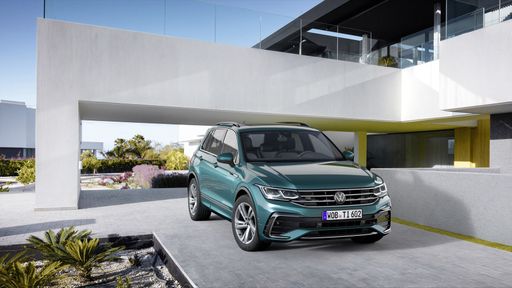
VW Tiguan
SsangYong Torres
The SsangYong Torres stands out with its rugged design and robust stance, ideal for adventure enthusiasts seeking a reliable companion for off-road escapades. Inside, the vehicle offers a spacious and comfortable cabin equipped with modern features to enhance the driving experience. Its performance is geared towards delivering a smooth ride, making it versatile for both city driving and rural trails.
detailsVW Tiguan
The VW Tiguan presents itself as a versatile and practical option in the SUV market, combining a stylish design with a spacious and comfortable interior. It offers a smooth driving experience, making it well-suited for both urban environments and longer journeys. With its focus on safety and innovative technology features, the Tiguan remains a compelling choice for families and adventurers alike.
details @ Volkswagen
@ Volkswagen
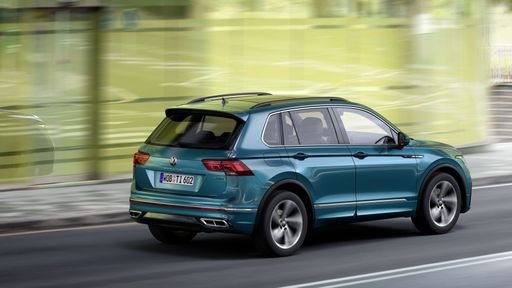 @ Volkswagen
@ Volkswagen
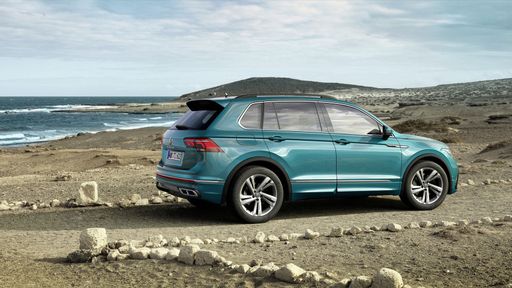 @ Volkswagen
@ Volkswagen
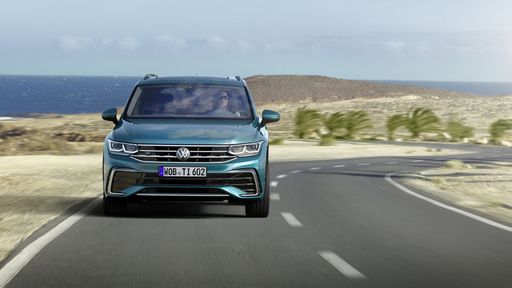 @ Volkswagen
@ Volkswagen
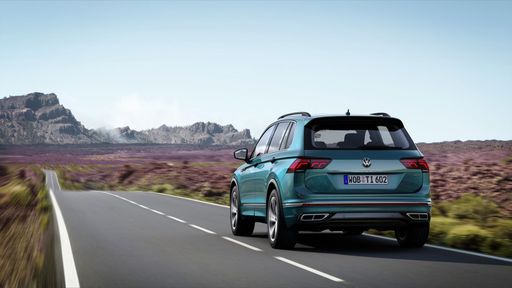 @ Volkswagen
@ Volkswagen
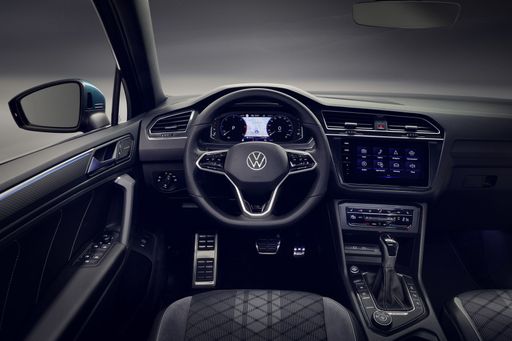 @ Volkswagen
@ Volkswagen

|
|
|
|
|
Costs and Consumption |
|
|---|---|
|
Price
33800 - 44600 £
|
Price
32800 - 51900 £
|
|
Consumption L/100km
7.9 - 9.1 L
|
Consumption L/100km
0.4 - 8.4 L
|
|
Consumption kWh/100km
18.70 kWh
|
Consumption kWh/100km
-
|
|
Electric Range
462 km
|
Electric Range
119 - 129 km
|
|
Battery Capacity
-
|
Battery Capacity
19.70 kWh
|
|
co2
0 - 207 g/km
|
co2
8 - 190 g/km
|
|
Fuel tank capacity
50 L
|
Fuel tank capacity
45 - 58 L
|
Dimensions and Body |
|
|---|---|
|
Body Type
SUV
|
Body Type
SUV
|
|
Seats
5
|
Seats
5
|
|
Doors
5
|
Doors
5
|
|
Curb weight
1498 - 1618 kg
|
Curb weight
1599 - 1890 kg
|
|
Trunk capacity
703 L
|
Trunk capacity
490 - 652 L
|
|
Length
4700 mm
|
Length
4539 mm
|
|
Width
1890 mm
|
Width
1842 - 1859 mm
|
|
Height
1710 mm
|
Height
1656 - 1658 mm
|
|
Max trunk capacity
1662 L
|
Max trunk capacity
1486 - 1650 L
|
|
Payload
552 kg
|
Payload
460 - 533 kg
|
Engine and Performance |
|
|---|---|
|
Engine Type
Petrol, Electric
|
Engine Type
Plugin Hybrid, Petrol, Petrol MHEV, Diesel
|
|
Transmission
Manuel, Automatic
|
Transmission
Automatic
|
|
Transmission Detail
Manual Gearbox, Automatic Gearbox, Reduction Gearbox
|
Transmission Detail
Dual-Clutch Automatic
|
|
Drive Type
Front-Wheel Drive, All-Wheel Drive
|
Drive Type
Front-Wheel Drive, All-Wheel Drive
|
|
Power HP
163 - 207 HP
|
Power HP
130 - 272 HP
|
|
Acceleration 0-100km/h
-
|
Acceleration 0-100km/h
5.9 - 10.6 s
|
|
Max Speed
191 - 194 km/h
|
Max Speed
198 - 242 km/h
|
|
Torque
280 - 339 Nm
|
Torque
220 - 400 Nm
|
|
Number of Cylinders
4
|
Number of Cylinders
4
|
|
Power kW
120 - 152 kW
|
Power kW
96 - 200 kW
|
|
Engine capacity
1497 cm3
|
Engine capacity
1498 - 1984 cm3
|
General |
|
|---|---|
|
Model Year
2023 - 2024
|
Model Year
2024 - 2025
|
|
CO2 Efficiency Class
G, A
|
CO2 Efficiency Class
B, G, D, E, F
|
|
Brand
SsangYong
|
Brand
VW
|
Is the SsangYong Torres offered with different drivetrains?
Available configurations include Front-Wheel Drive or All-Wheel Drive.
The prices and data displayed are estimates based on German list prices and may vary by country. This information is not legally binding.
